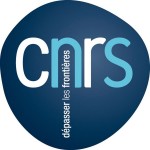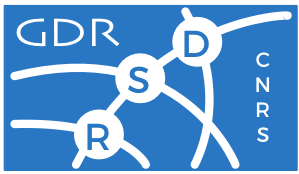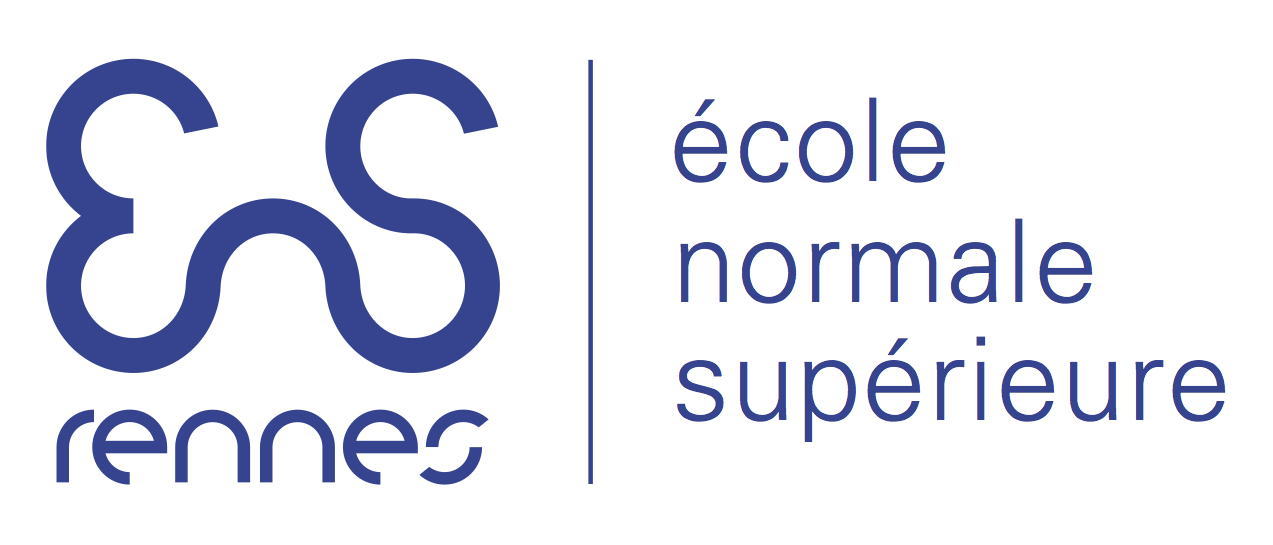- Olivier Berder, Université Rennes 1, IRISA
- Anne Blavette, CNRS, SATIE
- Carole Charbuillet, ENSAM
- Dino Lopez Pacheco, Université de Nice, I3S
- Nicolas Montavont, IMT Atlantique, IRISA
- Anne-Cécile Orgerie, CNRS, IRISA
- Olivier Sentieys, Inria, IRISA
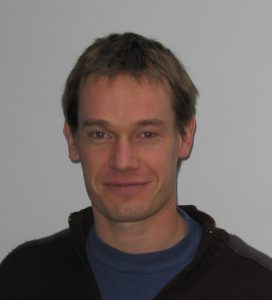 |
Olivier BerderTowards Energy Autonomous Wireless Sensor Networks |
| Bio: Olivier Berder received the B.S., M.S., and Ph.D. degrees in electrical engineering from the University of Bretagne Occidentale, Brest, in 1998, 1999, and 2002, respectively. From 2002 to 2004 he was with the Laboratory for Electronics and Telecommunication Systems (LEST–UMR CNRS 6165), Brest. From October 2004 to February 2005 he was with the Speech and Sound Technologies and Processes Laboratory in FT R&D, Lannion, France. In March 2005 he joined University of Rennes 1 where he is currently a Professor at IUT Lannion, and the laboratory IRISA in Rennes. He is the leader of GRANIT team and his research interests focus on cooperative and adaptive techniques for energy efficient mobile communications and wireless sensor networks. He has co-authored more than 120 peer reviewed papers in international journals or conferences and has participated in numerous collaborative projects founded by either European Union or French National Research Agency, mainly related to Wireless Sensor Networks. |
|
| Talk: Wireless Sensor Networks (WSNs) are made of multiple sensor devices which measure physical values (e.g. temperature, pressure. . . ) and communicate wirelessly, enabling many Internet of Things (IoT) applications such as smart buildings and precision farming. As the batteries can only store a fi nite amount of energy, the network is however doomed to die, and changing the batteries is not always possible if the network is dense or if the nodes are deployed in a harsh environment. A promising solution is to enable each node to harvest energy directly in its environment, using individual energy harvesters. Thanks to power management techniques at network lower layers (e.g. adaptation of the wake-up interval of nodes or their transmission power), and cooperation between nodes, it is therefore possible to optimize the quality of service while guarantying energy neutral operations over a finite horizon. | |
|
|
Anne BlavetteFrom traditional electrical networks to smart grids |
| Bio: Anne Blavette obtained her PhD thesis in electrical engineering from University College Cork, Ireland in 2013. Her thesis focused on the grid integration of wave energy farms and the generic modelling of marine energy converters for power system studies. In 2014, she worked on the flicker induced by tidal farms subject to relatively energetic wave conditions at the IREENA research centre, University of Nantes, France. In 2015, she obtained a European Marie Curie Post-doctoral Fellowship to work at the SATIE research centre, Ecole Normale Supérieure de Rennes, France in the field of optimal energy management and power quality in coastal smart grids. Since 2015, she has been a permanent CNRS researcher at the SATIE research centre. Among other activities, she has been the scientific leader of the RennesGrid project (led by Schneider Electric and funded by ADEME) since 2017. This project aims at investigating the optimal management of both the electrical network and of its ICT control infrastructure, among others. Her research interests are in the field of optimal energy management of both the electrical network and of its ICT control infrastructure, power quality, and renewables grid integration. | |
| Talk: The presentation will focus on the electrical networks and their management, as well as on the radical change induced by their transformation into “smart grids”. The general principles of electrical network design and management will be introduced, as well as intelligent, and more sustainable, approaches such as: demand side management (including dynamic electric vehicle charging), real-time electrical equipment management, etc. which will require the massive use of ICTs. | |
| Slides.pdf | |
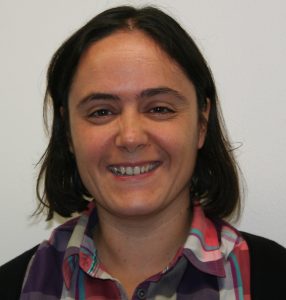 |
Carole CharbuilletLife Cycle Analysis and ICT : principles, main issues and limits |
| Bio : Carole Charbuillet is a research engineer at The Arts et Métiers Institute in Chambéry, France, since 2010. She obtained her PhD thesis in industrial engineering in 2009. Her main research interests are: Life Cycle Analysis (LCA) of products like ICT with a focus on the end-of-life phase and design for recycling. For example, she helps manufacturers to integrate LCA in their R&D process in order to develop projects with less environmental impacts. She makes also training sessions on these two subjects for students and manufacturers. Carole Charbuillet is a member of EcoInfo since 2010. | |
| Talk: ICT appears as a solution to reduce the environmental impacts of many applications (online purchase, teleworking…). However, what are the real environmental impacts (positive and negative) of such technology? How can we measure them along their life cycle? The presentation will focus on the Life Cycle Analysis Methodology (LCA). LCA is a methodology to quantify the environmental impacts of products. The principles of LCA will be introduced. They are defined by the ISO 14040 norm. The main characteristics and also the limits of the method will be presented. Then a focus will be done on LCA and ICT through some examples. The objective is to highlight the major environmental issues of ICT for each life stage. | |
| Slides.pdf | |
 |
Dino Lopez PachecoTowards Realistic Devices Shutdown Strategies in ISP and Data Center networks |
| Bio: Dino Lopez Pacheco is currently Associate Professor at the University Nice Sophia Antipolis, France, from September 2009. Between September 2008 and July 2009, he did a post-doc at the Institut Supérieur de l’Aéronautique et de l’Espace, in Toulouse, France. He prepared his Ph.D. at the LIP laboratory of the Ecole Normale Supérieure in Lyon, France and obtained his Ph.D. diploma in July 2008. The main research interests of Dino López concern the study of performance and resilience of SDN-based networks; the study of the Virtualization and Migration in Data Center scenarios, from both the transport and the network layers perspective; and the study of energy optimization in both ISP and Data Center networks. | |
| Talk: According to some recent studies, end hosts and network access, network backbone and data centers are globally responsible of one third of the energy consumption of ICT. To reduce the energy footprint of networks, one of the most effective approaches is to turn off unused equipments, which might hurt the user’s Quality of Experience. In this presentation, we will explore how we can indeed (i) turn forwarding devices off, e.g. routers, in an Internet Service Provider (ISP) network; or (ii) turn off servers in Data Centers, while mitigating the negative impact on the perceived users’ QoE. For ISP networks, we present an integral solution where the network provider can leverage Software Defined Network based Points-of-Presence (SDN-based PoPs) deployed around legacy PoP to smartly adapt the number of active devices. We assume legacy PoPs driven by a classical interior gateway routing protocol, like the Open Shortest Path First (OSPF) protocol. Our solution has been enriched with a set of features to safely turn off network devices: tunneling for fast re-routing, smooth node disabling and detection of both traffic spikes and link failures. In Data Centers (DCs), we tackle the problem of idle virtual machines (VMs) awaiting for incoming connections and/or keeping established-and-idling sessions. We propose a novel solution to turn off idle VMs, without incurring into network-, transport- or application-based disconnections. To do so, we transform a fully-fledged idle VMs into a lightweight and resourceless virtual network functions (VNFs), and then reduce the allocated memory of those idle VMs. Finally, a fast VM restoration strategy upon user activity detection provides SLA protection. The de-allocated memory from idle VMs can be reassigned to new VMs or lead to massive consolidation in physical servers to decrease the energy footprint of DCs. |
|
| Slides.pdf | |
 |
Nicolas MontavontMAC and network protocols for the IoT |
| Bio: Nicolas Montavont is a full professor at IMT Atlantique, in the SRCD department, and responsible of the IRISA OCIF team since 2015. He received the M.Sc. degree, and PhD degree in Computer science from the University of Strasbourg, France, in 2001 and 2004 respectively. He also did a post-doc at National institute of Standard and Technologies (NIST) in Gaithersburg, USA. Hi received his HDR in 2015 from Université Rennes 1. His research topics during these first years of research were mobility and multihoming management in IPv6 networks. He chaired the Mobile Node with Multiple Interfaces (Monami6) working group at the IETF from 2005 to 2007 and contributed to several standards, with a strong experience in horizontal and vertical handovers. His research topics evolve toward sensors network, smart grids and green communication infrastructure and protocols. His is currently involved in three main projects: interface and network selection algorithm, relaying in ad hoc networking for green and efficient communication and applying the IoT protocols for the Industry. | |
| Talk: Industrial Internet of Things (IoT) is an emerging concept in which the standard protocols for the IoT are adapted to enter the factories and increase the Industry efficiency. Industrial IoT requires reliable and deterministic communication. Determinism implies that there must be a guarantee that each data packet will be delivered within a bounded delay. Moreover, it must ensure that the potential congestion or interference will not impact the predictable properties of the network. In 2016, IEEE 802.15.4-Time-Slotted Channel Hopping (TSCH) emerged as an alternative Medium Access Control to the industrial standards such as WirelessHART and ISA100.11a. This talk will focus on recent advances in this domain, by explaining what is a scheduling, how to build one, how to route data in a multi-hop network with deterministic characteristics. | |
| Slides.pdf | |
 |
Anne-Cécile OrgerieReducing the energy impact of virtualized data centers |
| Bio: Anne-Cécile Orgerie is research scientist (Chargée de Recherche) at CNRS in the Myriads team at IRISA in Rennes, France. She received her PhD from Ecole Normale Supérieure de Lyon (France) in 2011. During her PhD, she worked on energy-efficiency in large-scale distributed systems. From October 2011 to September 2012, she was working as a postdoc at the Department of Electrical and Electronic Engineering at the University of Melbourne (Australia), where she gained skills on network instrumentation and clock synchronization in distributed systems. Her research interests focus on energy efficiency, Cloud computing, distributed systems and Smart Grids, from both practical and theoretical perspectives. | |
| Talk: This presentation will start by introducing the energy-related challenges in data centers. We will highlight the main difficulties in measuring the power consumption of data centers’ devices and propose a methodology for monitoring the influencing parameters. From this methodology, we will derive energy models for Cloud infrastructures: data centers and telecommunication networks. We will then focus on a given use-case for edge Cloud infrastructure with IoT streaming applications. On this given scenario, we will explore trade-offs between performance (latency and application accuracy) and energy consumption. | |
| Slides.pdf | |
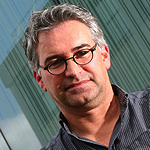 |
Olivier SentieysEnergy Efficiency of Computing Architectures – A Deep Dive into Processors and Emerging Computing Machines |
| Bio: Olivier Sentieys is a Professor at the University of Rennes holding an Inria Research Chair on Energy-Efficient Computing Systems. He is leading the Cairn team common to Inria (French research institute dedicated to computational sciences) and IRISA Laboratory. He is also the head of the “Computer Architecture” department of IRISA. From 2012 to 2017 he was on secondment at INRIA as a Senior Research Director. His research interests are in the area of computer architectures, embedded systems and signal processing, with a focus on system-level design, energy-efficiency, reconfigurable systems, hardware acceleration, approximate computing, and power management of energy harvesting sensor networks. He authored or co-authored more than 250 journal or conference papers, holds 6 patents, and served in the technical committees of several international IEEE/ACM/IFIP conferences. | |
| Talk: This presentation will start by introducing the sources of energy and power consumption in integrated circuits. Then, the talk will focus on computing architectures and will aim to give some leads for improving their energy efficiency, from embedded systems to data-centers. The hardware architecture of processors, as well as their use from a software or system point of view, have a direct impact on their power consumption. After an overview of multi-core architectures and their evolution, good practices for their design, both at the hardware and software levels, will be discussed. The presentation will end with some possible evolutions in their architecture and new computing paradigms to consider a better energy efficiency. In particular, the advantages of hardware acceleration, approximate computing and emerging technologies, will be presented. | |
| Slides.pdf | |



